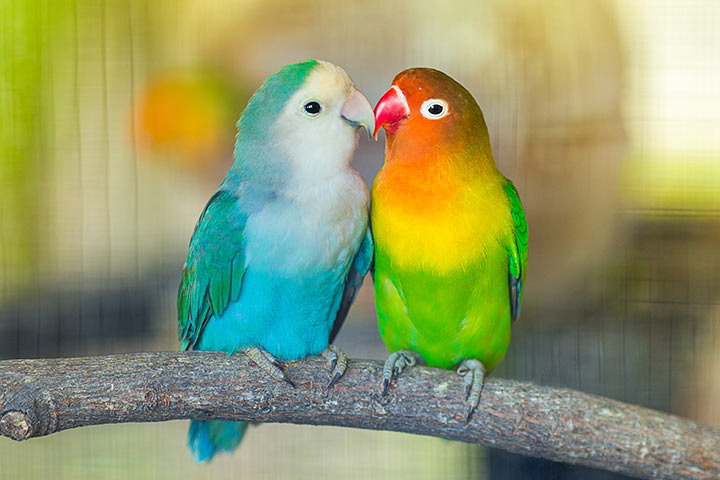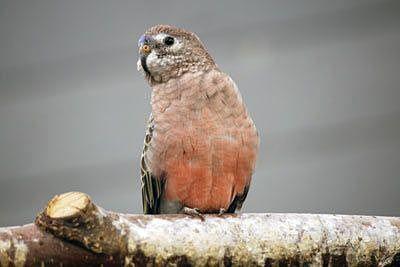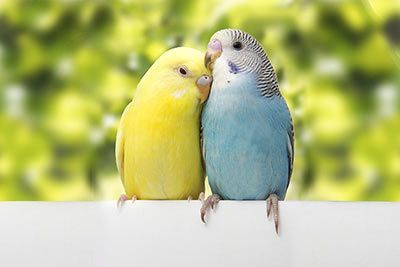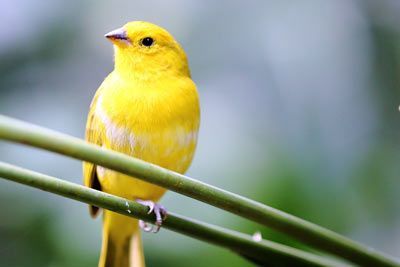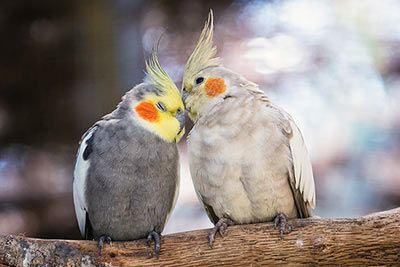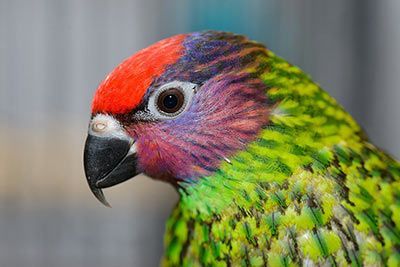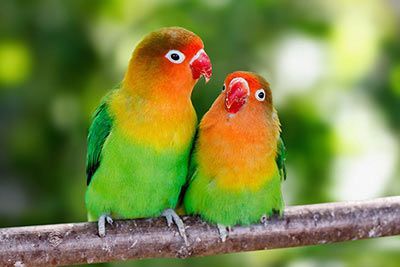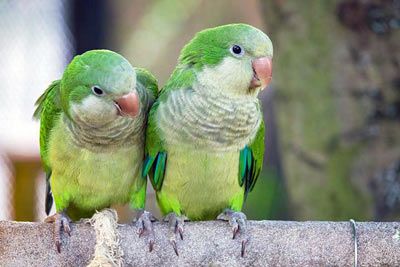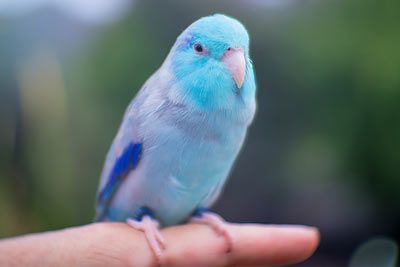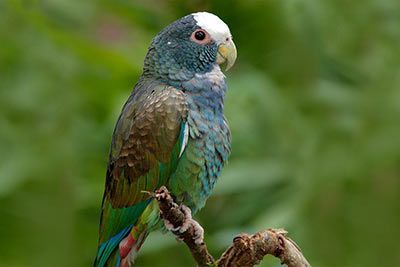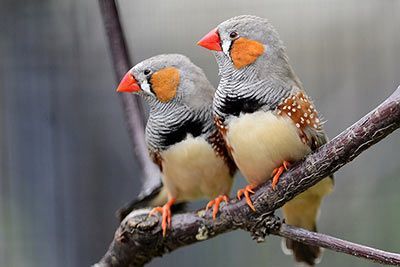Lovebird
Lovebird Pet Bird Profile
| Size | 5.5-7 inches (14-18 cm) |
| Origin | Africa |
| Color | Yellow; red, green, orange; multi-colored |
| Lifespan | 10-12 years |
| Personality | Active, playful, confident, curious, demanding |
| How to keep them | At least in pairs (one of each gender) |
| Hand-tame bird | |
| Talking bird | |
| Bird Noise |
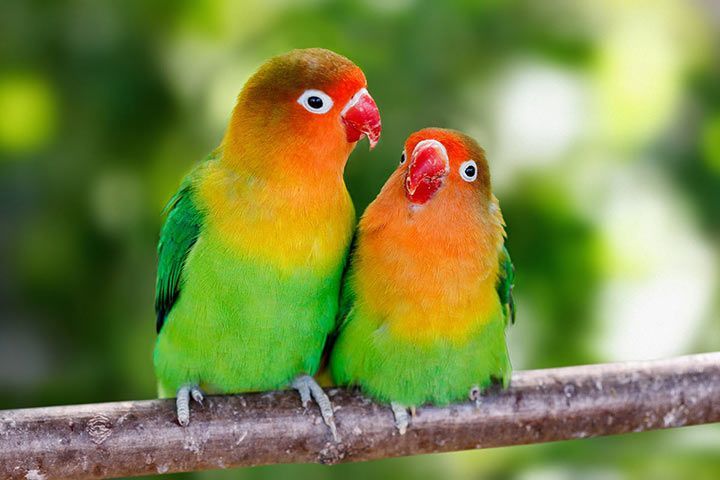
Characteristics
Lovebirds are very funny, playful, clumsy and silly little “clowns”. Their cheeky but very lovable and adorable personalities are hard to resist. Be careful! Anyone that watches these birds curiously explore their surroundings, play and cuddle up together runs the risk of falling head over heels in love with them! Lovebirds are sometimes called “pocket parrots” (like the Pacific parrotlet) as these little birds often have the mischievous and impish personalities of big parrots in a tiny package.
Behavior
Do They Talk?
Very very rarely. They mimic noises they hear often, like the beeping of a microwave, the doorbell or telephone.
Do They Make a Lot of Noise?
Lovebirds are a “medium” in terms of noise. They’re not super quiet but not particularly loud birds. When they’re excited, scared or lonely, they will make it known with a shrill chirp.
Do They Fall in Love?
Yes! They get their name because the pairs form very close bonds. They live with their partners for a long time, cuddle up together, groom each other’s feathers, feed together and look out for each other. Their scientific name, “agapornis” comes from the Greek “agape” meaning “love” and “ornis” meaning “bird”.
Appearance
Types of Lovebirds
There are nine types that are almost all named after their looks: gray-headed, red-headed, black-winged, black-collared, rosy-faced, Fischer’s, yellow-collared, Lilian’s and black-cheeked.
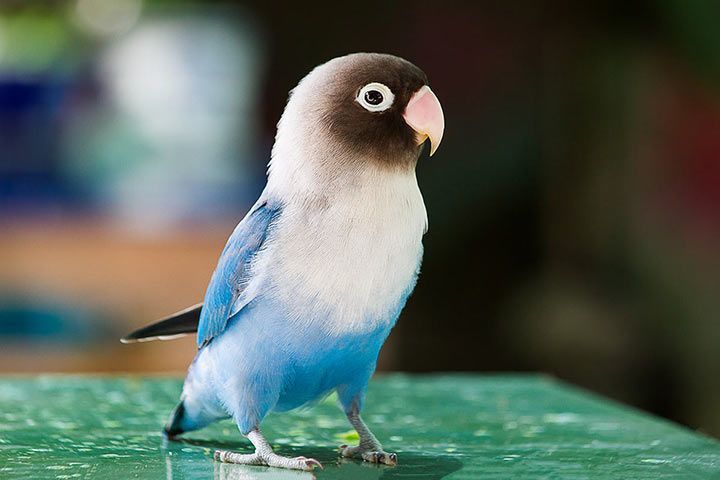
How to Keep Them
Cage size: at least 48 x 40 x 24 inches (120 x 100 x 60 cm) (W x H x D) for two animals
When it comes to the birdcage: lovebirds love toys, swings, tunnels, baths, perches and other places to sit. Ideally, you should get a comprehensive bird guide before making a purchase so you know your pets will feel at home.
Lovebirds are very active and lively birds that need to move around a lot. So they need several hours outside the cage each day.
Can You Keep a Lovebird Without a Partner?
You’ll often hear that lovebirds can actually be kept alone. Or you might even read that it’s completely fine for the birds and comes with the added benefit of the bird developing a very close bond with its human - and that’s very tempting to lots of people. STOP! Benefit for whom exactly? Lovebirds live in flocks and get their names from being the OPPOSITE of solitary. And people just aren’t the same as other birds.
What’s behind this question of whether a bird can be kept alone? People hope that they’ll get all the pet’s full attention and love. But that’s just using the animal to feel better, that’s not caring for a pet. If you love birds, think about their wellbeing and not your own. So, please never keep just one lovebird.
Fun Facts
Lovebirds come from Africa - they’re found in Tanzania, Malawi, Zambia, Botswana, Namibia, South Africa, Ethiopia and Madagascar (just the gray-headed). They live in various different habitats, from hot savannas to humid tropical rainforests.
